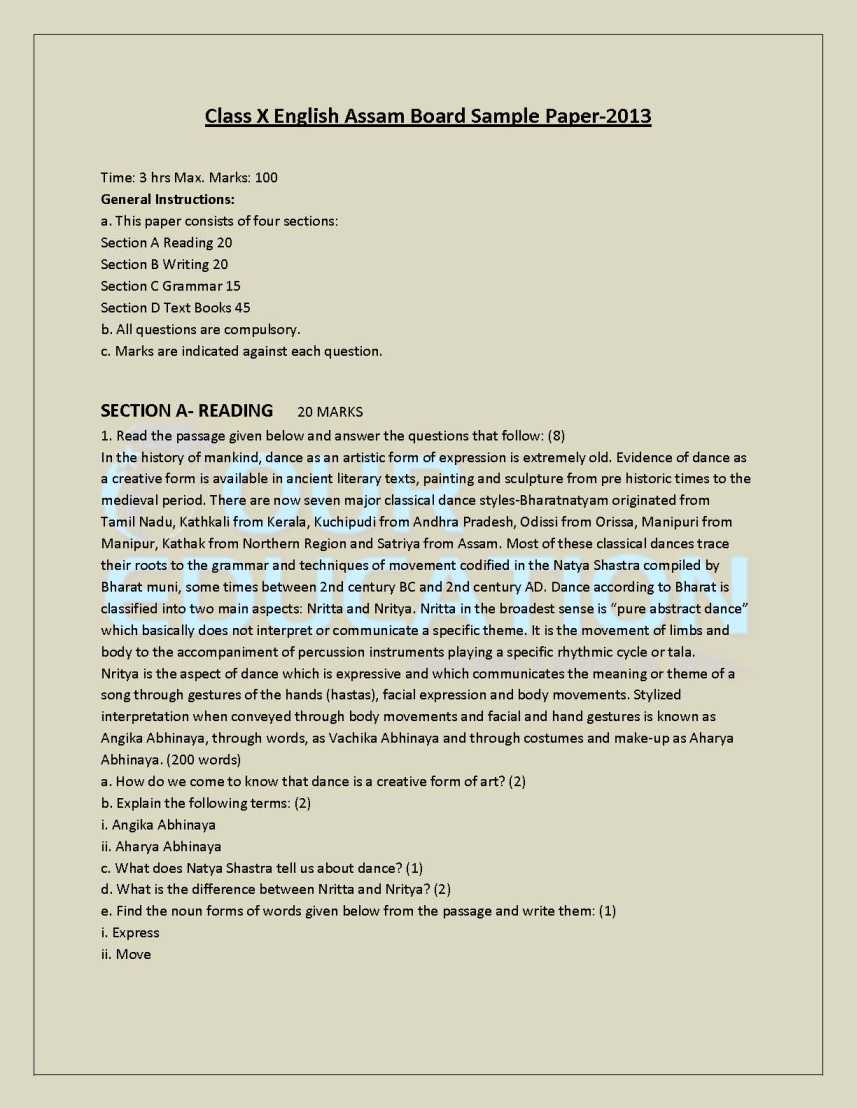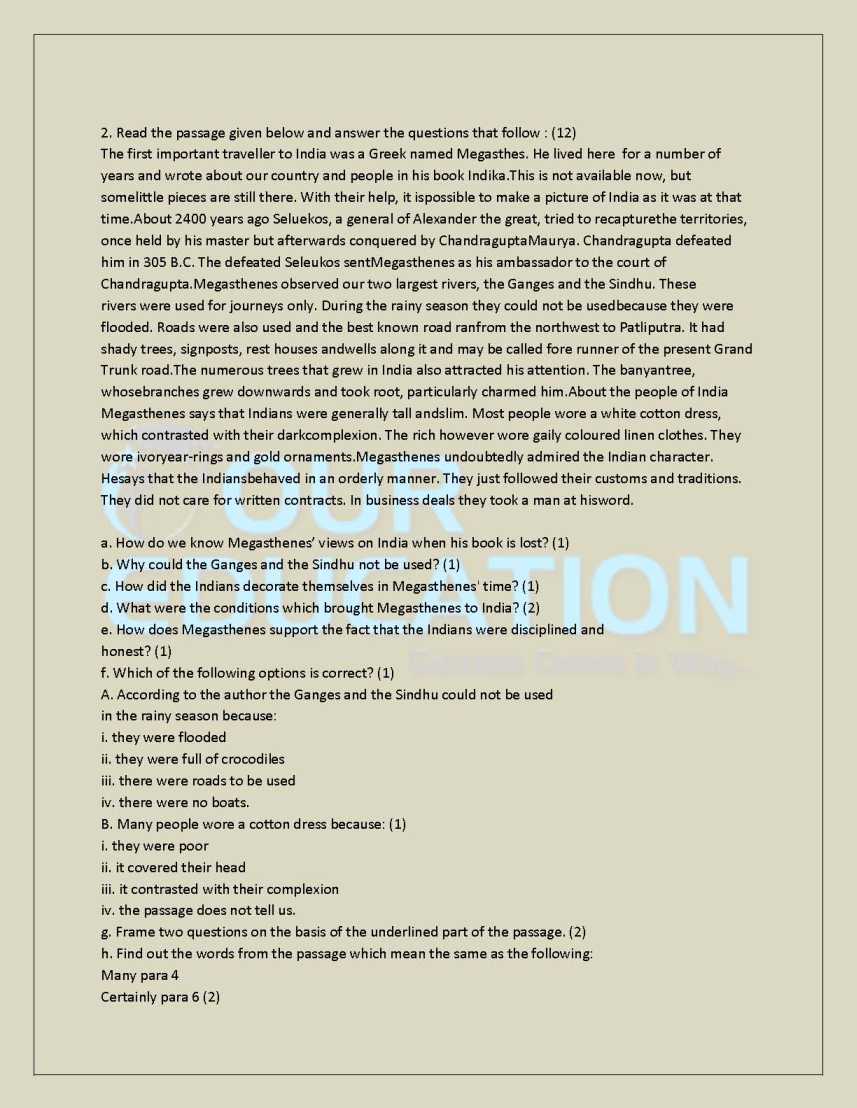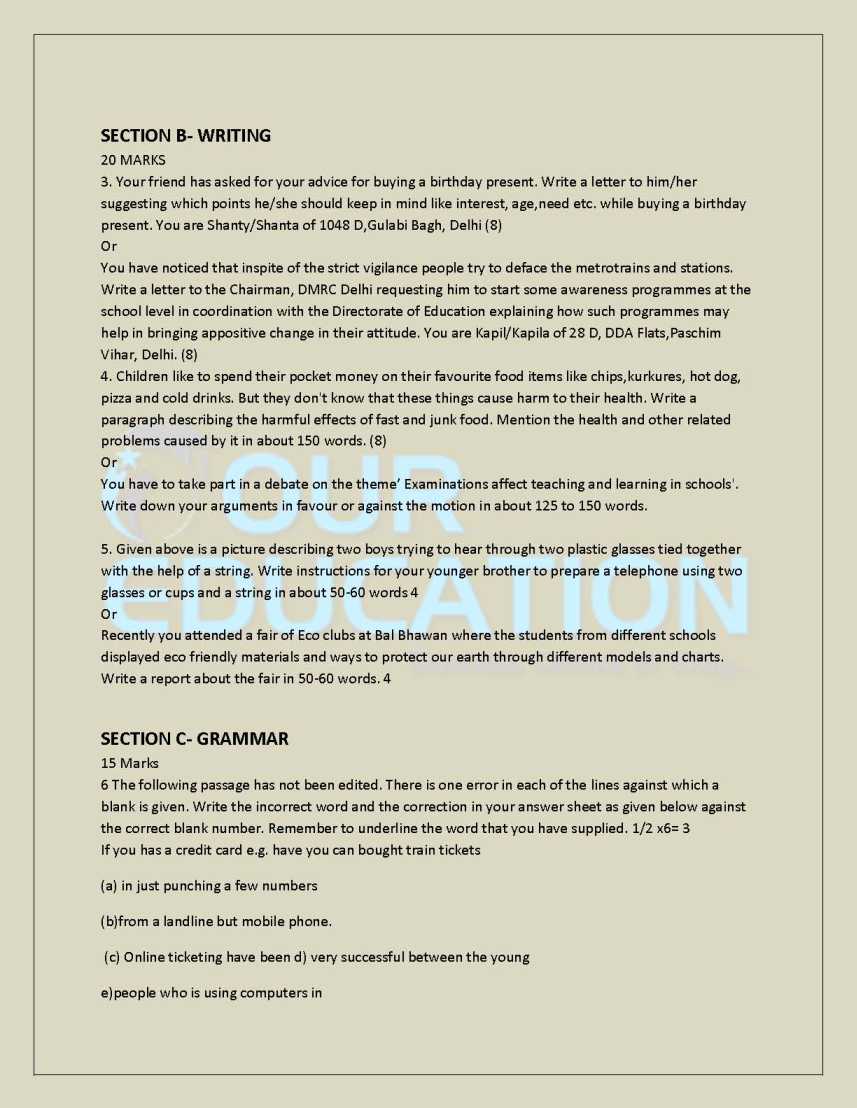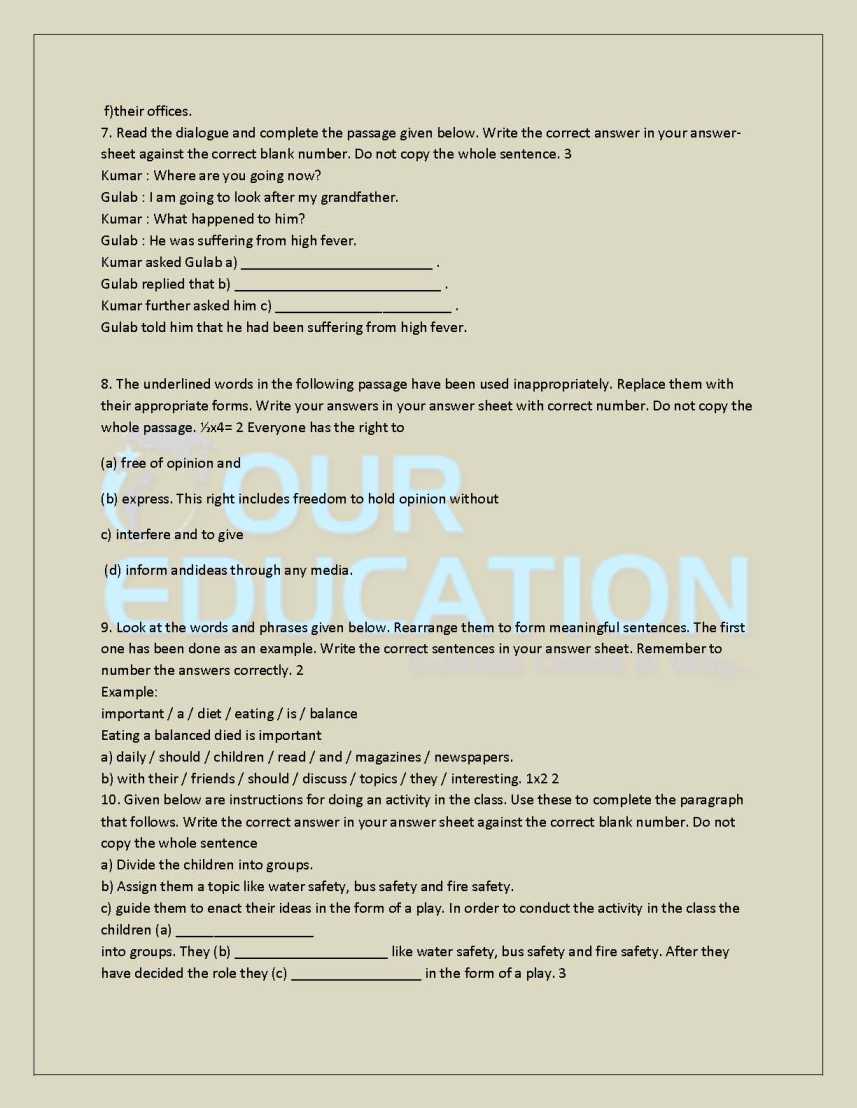|
#2
15th November 2017, 01:40 PM
| |||
| |||
| Re: Assam Higher Secondary Education Council Sample Papers
As you want here I am sharing Assam Higher Secondary Education Council Sample Papers with you on your demand : Class X English Assam Board Sample Paper Time: 3 hrs Max. Marks: 100 General Instructions: a. This paper consists of four sections: Section A Reading 20 Section B Writing 20 Section C Grammar 15 Section D Text Books 45 b. All questions are compulsory. c. Marks are indicated against each question. SECTION A- READING 20 MARKS 1. Read the passage given below and answer the questions that follow: (8) In the history of mankind, dance as an artistic form of expression is extremely old. Evidence of dance as a creative form is available in ancient literary texts, painting and sculpture from pre historic times to the medieval period. There are now seven major classical dance styles-Bharatnatyam originated from Tamil Nadu, Kathkali from Kerala, Kuchipudi from Andhra Pradesh, Odissi from Orissa, Manipuri from Manipur, Kathak from Northern Region and Satriya from Assam. Most of these classical dances trace their roots to the grammar and techniques of movement codified in the Natya Shastra compiled by Bharat muni, some times between 2nd century BC and 2nd century AD. Dance according to Bharat is classified into two main aspects: Nritta and Nritya. Nritta in the broadest sense is pure abstract dance which basically does not interpret or communicate a specific theme. It is the movement of limbs and body to the accompaniment of percussion instruments playing a specific rhythmic cycle or tala. Nritya is the aspect of dance which is expressive and which communicates the meaning or theme of a song through gestures of the hands (hastas), facial expression and body movements. Stylized interpretation when conveyed through body movements and facial and hand gestures is known as Angika Abhinaya, through words, as Vachika Abhinaya and through costumes and make-up as Aharya Abhinaya. (200 words) a. How do we come to know that dance is a creative form of art? (2) b. Explain the following terms: (2) i. Angika Abhinaya ii. Aharya Abhinaya c. What does Natya Shastra tell us about dance? (1) d. What is the difference between Nritta and Nritya? (2) e. Find the noun forms of words given below from the passage and write them: (1) i. Express ii. Move 2. Read the passage given below and answer the questions that follow : (12) The first important traveller to India was a Greek named Megasthes. He lived here for a number of years and wrote about our country and people in his book Indika.This is not available now, but somelittle pieces are still there. With their help, it ispossible to make a picture of India as it was at that time.About 2400 years ago Seluekos, a general of Alexander the great, tried to recapturethe territories, once held by his master but afterwards conquered by ChandraguptaMaurya. Chandragupta defeated him in 305 B.C. The defeated Seleukos sentMegasthenes as his ambassador to the court of Chandragupta.Megasthenes observed our two largest rivers, the Ganges and the Sindhu. These rivers were used for journeys only. During the rainy season they could not be usedbecause they were flooded. Roads were also used and the best known road ranfrom the northwest to Patliputra. It had shady trees, signposts, rest houses andwells along it and may be called fore runner of the present Grand Trunk road.The numerous trees that grew in India also attracted his attention. The banyantree, whosebranches grew downwards and took root, particularly charmed him.About the people of India Megasthenes says that Indians were generally tall andslim. Most people wore a white cotton dress, which contrasted with their darkcomplexion. The rich however wore gaily coloured linen clothes. They wore ivoryear-rings and gold ornaments.Megasthenes undoubtedly admired the Indian character. Hesays that the Indiansbehaved in an orderly manner. They just followed their customs and traditions. They did not care for written contracts. In business deals they took a man at hisword. a. How do we know Megasthenes views on India when his book is lost? (1) b. Why could the Ganges and the Sindhu not be used? (1) c. How did the Indians decorate themselves in Megasthenes time? (1) d. What were the conditions which brought Megasthenes to India? (2) e. How does Megasthenes support the fact that the Indians were disciplined and honest? (1) f. Which of the following options is correct? (1) A. According to the author the Ganges and the Sindhu could not be used in the rainy season because: i. they were flooded ii. they were full of crocodiles iii. there were roads to be used iv. there were no boats. B. Many people wore a cotton dress because: (1) i. they were poor ii. it covered their head iii. it contrasted with their complexion iv. the passage does not tell us. g. Frame two questions on the basis of the underlined part of the passage. (2) h. Find out the words from the passage which mean the same as the following: Many para 4 Certainly para 6 (2) Assam Higher Secondary Education Council Sample Papers     |